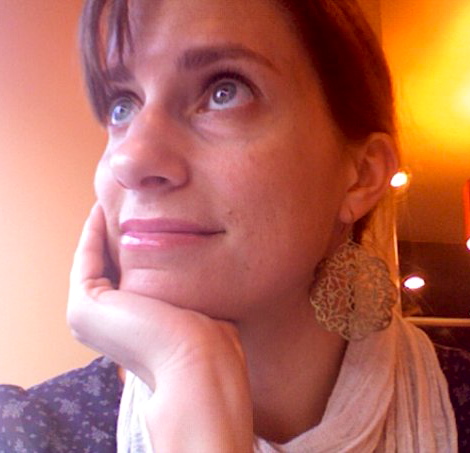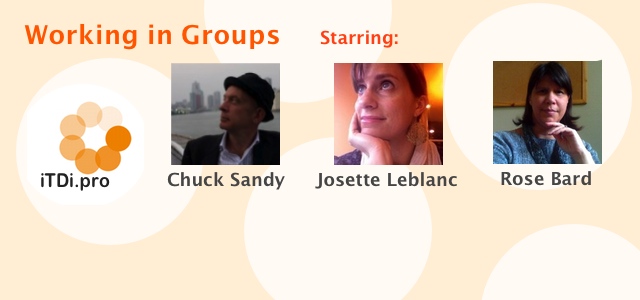
Make Space For Introverts – Chuck Sandy
Although group work has become an almost de rigueur part of modern communicative language teaching, it’s well worth remembering that not all learners feel entirely comfortable about this. I know this because I’m one of those learners. I’m an introvert, and according to Susan Cain, I am not alone. In fact, in her recent book Quiet: The Power of Introverts In a World That Can’t Stop Talking and in her Ted talk, Cain estimates that in a classroom or workplace, between one third and a half of all people self-identify as introverts.
Yet, introverts like me are not shy. They are just quieter and more introspective than extroverts. While the truly shy withdraw because they fear social judgment, introverts, according to Cain and my own experience, are not withdrawn at all. They’re simply people who work best and learn most in quieter low-key environments — as in alone. While extroverts thrive on outside stimulation and interaction, introverts most often just find a way to put up with it all unless they’re given some options.
I was in graduate school when I first learned how introverted I am and how much I disliked group work. Every assignment we had in my first semester was some group project leading to some group presentation. This was so painful for me, I even thought about getting out of education and going back to literature. Fortunately, in my second semester, I took a class in Educational Psychology with Dr. Linda McCain who did group work so differently that it not only helped get me through grad school, but also wound up informing how I’ve arranged my own classes throughout my entire teaching career.
Here’s some of what I learned about group work from Dr. McCain:
Create Space for introverts by organizing desks or chairs in fairly circular arrangements of three or five whenever possible. This allows for anyone who does not wish to get close and personal to sit him or herself back a bit from the group, while also forcing the group to work harder at being cohesive. I know this sound contradictory, but believe me: it works. My experience is that five works better than three, and that seven is too big, but experiment with this yourself and see what’s best. When pair work is called for, one group member simply turns and works with someone from a neighboring group on that activity.

Allow groups to self-organize and organically change membership over the course. Learners are better aware of who they work best with than their teachers are, so unless a problem develops, let learners organize themselves. Of course, be ready to step in and gently suggest changes when problems arise, but try to frame your suggestion in a positive way. You might say something like, “I’ve noticed that you enjoy X. Most of the people in Group Y do, too. How about joining them?” instead of “If you don’t be quiet, I’m going to move you to another group.”

Do some group building activities early onto help group members find their strengths and weaknesses. One that I’ve enjoyed doing is The Marshmellow Challenge in which groups get a marshmallow, several pieces of uncooked spaghetti noodles, some tape, and a string with which they have to build a tower. As groups work, they invariably discover who has leadership skills, who has organizational skills, and who quietly watches before later popping in with an idea. Of course the teacher sees this, too, but doing a post activity reflection helps bring the point home for everyone.
Have group members organically choose a group role that’s comfortable for them. For example, in groups of five, you might need a group leader who makes sure everyone is included, a secretary who takes notes, a task-master who keeps everyone on task, a language master who makes notes about new vocabulary and grammar encountered or needed, and a reporter whose job is to report back to the class. In those varied roles there is something for both extroverts and introverts.
Allow time for quiet individual deskwork even while sitting in groups. Not everything has to be done collectively. If group assignments are introduced by and followed up with individually done reflective writing or vocabulary/ grammar revision, this creates more space for the introverts to do what they do best.
Create alternative ways to do assignments and projects. Better yet, allow students to come up with their own suggestions for how they’d like to do a project. When learners are offered several possible ways into and through an activity or project, everyone is likely to find a way that works for them along with some new ways they can then tell others about and be proud of having discovered.
Be sensitive to and aware of the ever-changing moods and energy levels of your learners, and allow an out for those who do not feel like sharing much. Even extroverts have quiet introspective low-energy days on which they’d rather not share their feelings and opinions about whatever topic the group is focusing on. In fact, almost everyone has a day when they’d rather sit back and read a book or even take a break and go out for a walk. Why not let them do just that? Encourage a class atmosphere which is open enough that anyone, introvert or extrovert, can opt out when needed. Sometimes, just knowing that’s a possibility is a way forward.
And thank you Dr. McCain. After all these years I’m still using what you taught me — happily learning and teaching in my own introverted way. ~ Chuck Sandy
About Chuck: Chuck Sandy is a teacher, teacher trainer, author & educational activist with more than 30 years of experience. His many publications include the Passages and Connect series from Cambridge University Press, the Active Skills For Communication series from Cengage Learning, and English For Teachers from iTDi. He is a frequent presenter at conferences and workshops around the world. Chuck believes that positive change in education happens one student, one classroom, and one school at a time, and that it arises most readily out of dialogue and in collaboration with other educators. He is a cofounder and director of iTDi.
Connect with Chuck and other iTDi Associates, Mentors, and Faculty by joining the iTDi Community. Sign Up For A Free iTDi Account to create your profile and get immediate access to our social forums and trial lessons from our English For Teachers and Teacher Development courses.
Like what we do?
Become an iTDi Patron.
Your support makes a difference.










